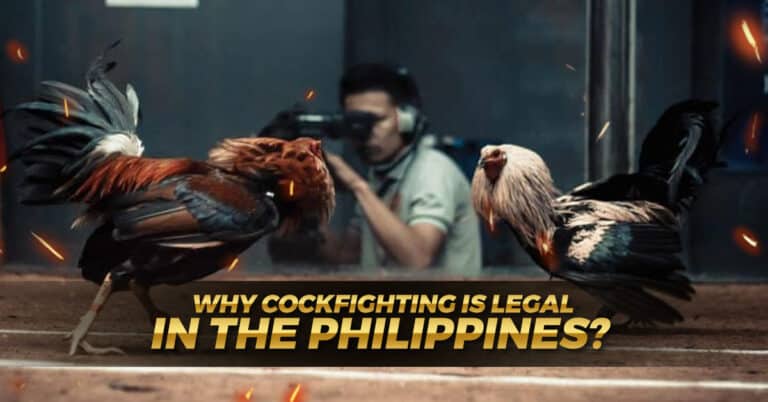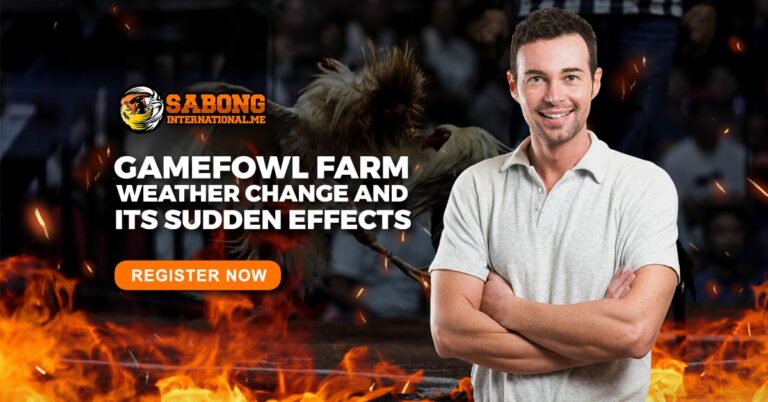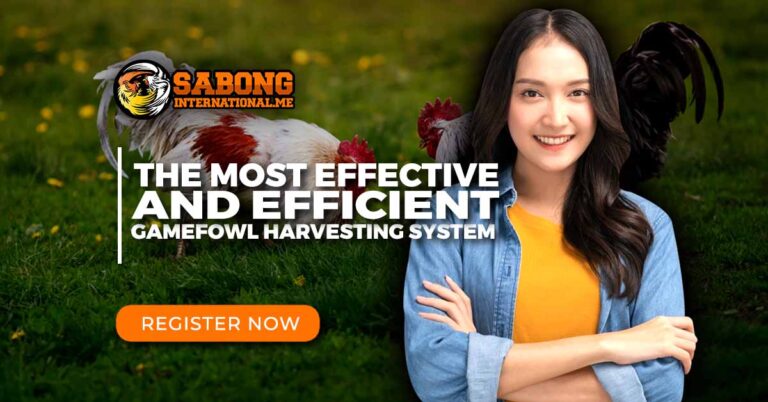Learn How to Make Gamefowl Stronger | Sabong PH
Sabong PH – Gamebirds spend a lot of time getting ready or conditioning before a battle, much like our athletes do. Since healthier birds have a better chance of winning in the pit than sickly battle stags, gamebirds are trained for combat from an early age to ensure that they grow up healthily.

Before the real training stage, we pre-condition gamebirds to get them mentally and physically ready. The exercises from the cord, fly pen, scratch box, the sparring, and then finding time for relaxation may be a very taxing daily schedule. The pre-conditioning regimen also includes eating a meal heavy in protein, taking nutritional supplements, and going through deworming, delousing, and bacterial flushing procedures.
Exercise Program for Gamebirds
Although raising game birds is a laborious procedure, it pays off in the form of nourishment, financial gain, or support for shooting activities. Having quail and pheasants close at hand for training bird dogs is advantageous to hunters. Birds may be sold to hunters for the purpose of teaching their dogs, to shooting preserves for the sake of hunting, or even to individuals who want a few birds for the table.

Chicken Cooping
To effectively raise a flock of hens, it’s crucial to keep your chicken coop clean. Features that minimize cleaning time and effort are used in the construction of chicken coops.
Deworming
Every chicken is distinctive and unusual. Because of this, not every chicken can have the same worms. There are a few other kinds of worms, though, that are frequently discovered in chickens.
Roundworms, tapeworms, and feather worms are the most prevalent. In case you’re curious about how hens acquire worms, they are either present in the eggs or are consumed along with the diet.
At least twice a year, and preferably right before laying, every chicken needs to be dewormed (so that the eggs do not contain worm eggs).
Bathing
Making your chicken dust baths guarantees that your hens are bathing in healthy dirt rather than dirt that is covered with manure, dead animals, decaying stuff, etc., which can hold harmful bacteria and injure your chickens.
To get your flock clean and prepared for grooming, you can also add herbs and nutrients that prevent parasites.
To keep the area clean and add supplements like diatomaceous earth or an herbal combination that helps keep them free of mites and lice, you may either let your hens create a dust bath in the ground or use a food-safe plastic container.
Wing Banding
Our study team’s many tasks include wing banding. Our pedigree birds are wing-banded so that we can record information on their parents’ and grandparents’ names, weights, egg production, and even the precise location of the bird. To maintain a cycle of consistently generating the best pheasants, we identify our pedigree birds.
An example of a pedigree bird is the best of the best pheasant! Generally speaking, beautiful bodies and feather growth are all signs of a pheasant that is an exceptional producer of more perfect birds. Pedigree pheasants have clear, bright eyes, ideal feet with straight toes, perfect legs, and perfect hocks. We need to recognize and monitor these particular birds.
Vaccine
A few diseases that can harm your gamefowl’s health and negatively impact its performance can be prevented with immunization. But if you’re new to the field, gamefowl vaccination can be extremely daunting and perplexing. Continue reading for a fast tutorial on the essential information, a sample immunization schedule, and a rundown of vaccine administration methods.
Types of Gamefowl Vaccination
Live vaccination. If the active ingredient in vaccination is live bacteria, then it is a live vaccine. Live vaccines are typically given under the close watch of a veterinarian because the bacteria is likely to cause sickness and certain aches. Additionally, it’s crucial to ensure the health of chickens that will get live vaccines by getting them ready.
Weakened Vaccine. Live microorganisms are also present in attenuated vaccinations. This type of vaccination underwent a different production method than live vaccines and has fewer side effects as a result.
Dead Vaccine. Vaccinations that contain dead germs do so. Vaccines that have been killed, in contrast to the earlier varieties, have little to no unfavorable effects on your gamefowl after administration. Unfortunately, the lesser effects come with a small improvement in the disease resistance of chickens.
Bacterial Flushing
Bacterial flushing is a crucial component of a gamefowl’s conditioning regimen and mating ritual. As the name suggests, it involves giving your poultry a periodic dose of antibiotics as directed to wash out hazardous microorganisms. Bacterial flushing is typically performed early in conditioning, much like delousing and deworming.
Process of Flushing Microbes
Every month, the farm performs bacterial flushing. The gamefowl will benefit from it during the phase of conditioning as they begin preparing for the battle.
Flushing with antibiotics
Tiamulin and doxycycline jointly treat respiratory infections that are resistant to other antibiotics. It has minimal bacterial resistance or up to 90% sensitivity to pathogens that make fighting cocks have respiratory issues. Give one capsule per 2 kg of body weight for five to seven days to fight cocks.
Sulfadimethoxine and trimethoprim are effective against colibacillosis, infectious coryza, fowl cholera, coccidiosis, and fighting cocks. For gamefowl, add 1 tsp (3 grams) per gallon of drinking water when the birds are between 15 and 30 days old. Give fresh water at night and administer through drinking water during the day.
B-complex vitamins for increased food absorption and optimal muscular development. It is also enriched with folic acid, liver extract, comb, and wattle for blood maturation, a crimson face, and folic acid for alertness and gameness during genuine fights. Give 0.5ml deep intramuscular injections once a week throughout the conditioning phase. 0.25ml, deep intramuscular two times per week for preconditioning, or as directed.
Sabong PH – Champion Gamefowl Bloodlines
Every cocker and game chicken producer now has a greater selection of bloodlines from which to choose. One merely needs to decide which characters to combine, then begin looking for lineages with those characters for his foundation stock.

Grey / Talisayin
The Law Grey, Sweater Grey, and Plain head Muff Grey are thought to be the three grey families that make up Regular Grey. Regular Grays have straight combs, green legs, and occasionally yellow duck wings. They are recognized for their strength and competitiveness and are middle to the low station. Breeders observe that they are equally strong and deadly as blue faces. Due to these, a lot of breeders have chosen Regular Grey as their baseline.
Sweater
Sweaters feature long feathers, especially on the tail, red-breasted chests, and yellow legs. One of the most dreaded gamefowl lineages is the sweater.
Sweaters are powerful, and when they get into a fight, they attack their adversary nonstop. Sweaters are known as “submission experts” in comparison to other bloodlines; while they can attack in the air, their “expertise” is attacking the opponent until they submit via ground-based submission.


Butcher
The Butcher lineage, a cross between some Spanish birds, the Speeder Grays, and Grove-White Hackle, is claimed to be Phil Marsh. Because of his line of work, Phil Marsh frequently fought as “Butcher Boys,” calling his opponents “Butchers”.
Butchers have straight red hair and frequently have white legs, however, others have yellow legs. When a Butcher hits you, you are hit, according to numerous experts who have studied them because of their reputation for precise cutting skill and intelligent fighting technique. Medium to low-stationed, butchers occasionally come in colors like brass back and spangled; the latter are now known as Black Butchers.
Asil
Power and endurance are derived from Asil’s Asian heritage. The pure Asil breed is a gamefowl that behaves very aggressively toward other chickens, whether they are competing for hens or cocks, but is friendly toward people. Your fighting broodstock is appreciated for the bloodline’s ability to restore lost energy and boost its endurance and aggressiveness.


Brown Red
The Brown Red is a speed cutter with various hitting moves that are recognized for its flashy shuffling actions. This strain’s only flaw is an apparent lack of gameness and stamina. It has dark legs, dark eyes, and distinctive black and burgundy feathering.
By introducing the Asil and other hardy birds, several breeders have been able to overcome this. Unlike a conventional Brown Red, the Brown Reds who were infused in the drag race acted defensively and with much calculation. Try this brown-red if you want to give your breed a quick killer.
McLean Hatch
Modern hatches fly higher and move faster, and many are smarter than normal. However, their regular traits, such as force and vigor, are still there, and their blows frequently carry a punch. They are primarily pea combed with some coming straight combed, and they are generally medium-stationed.


Lemon
a combination of a white hackle, clarets, and a blue face hatch. They could be pea comb or straight, more on the medium or low station, and bright yellow-red in hue. With lemon hackle, they have 30% white legs and 70% yellow legs. It is thought of as a sophisticated bird with weaving skills since they are regarded as accurate cutters with good timing. It combines nicely with Kelso and especially the hatch strain of gamefowl and can be battled in as is given their existing genetic make-up. A straight comb lemon is made up of 1/4 Kearney white hackle, 1/4 claret, and 1/2 sandy hatch. Clarets and McLean hatch make up one pea comb.










